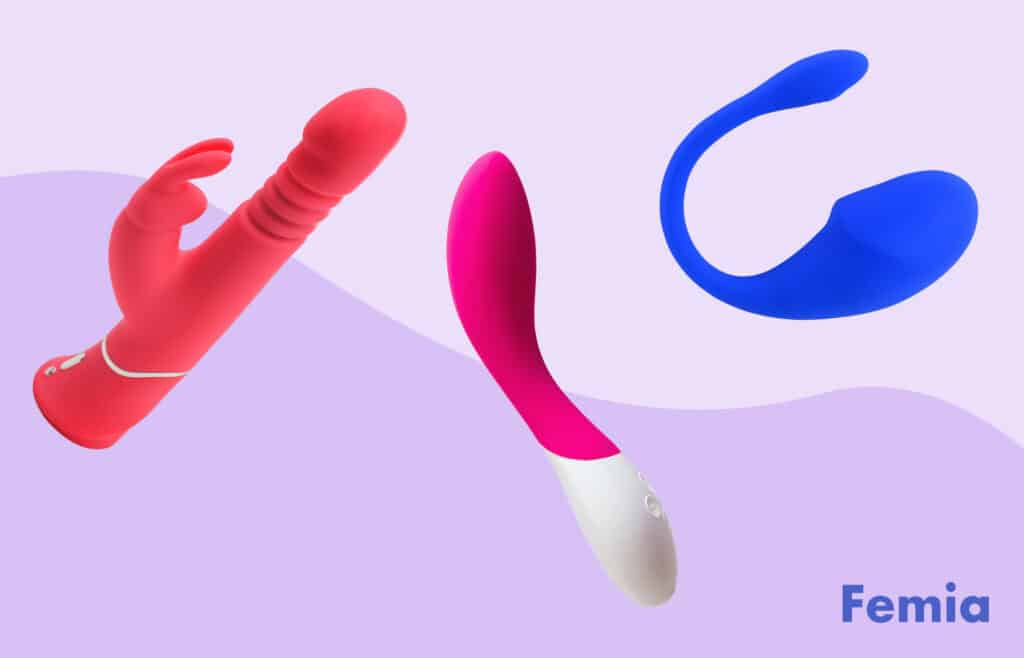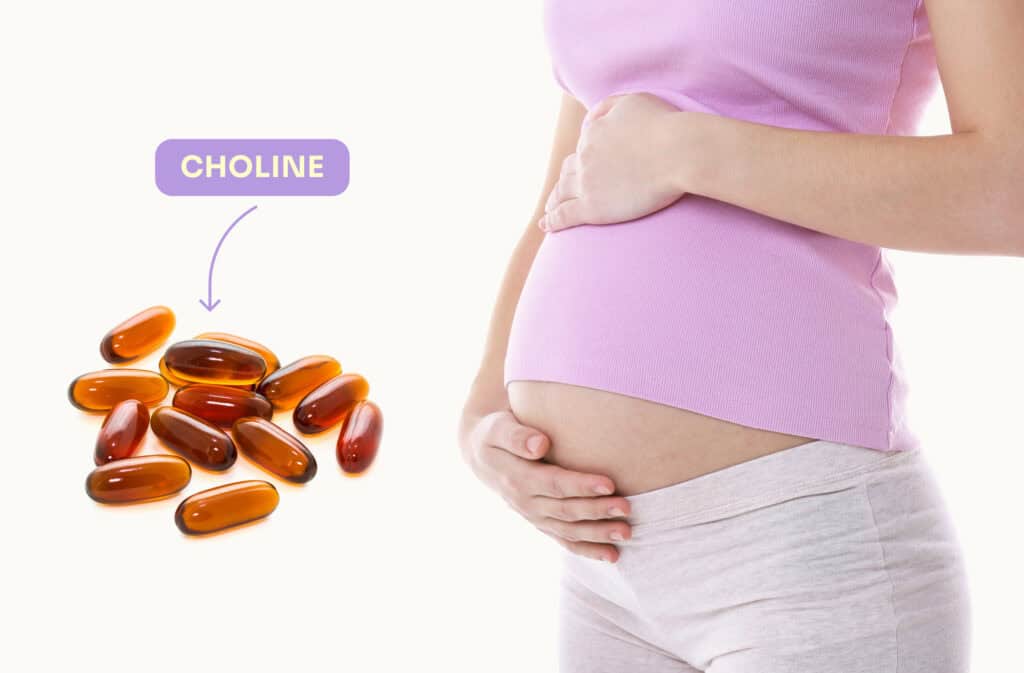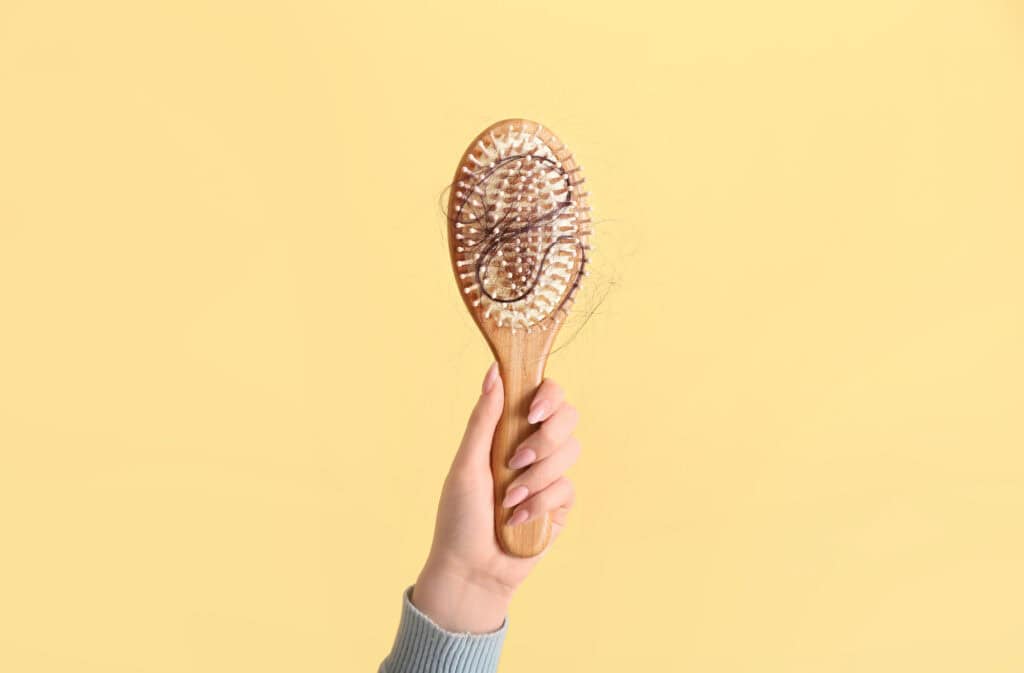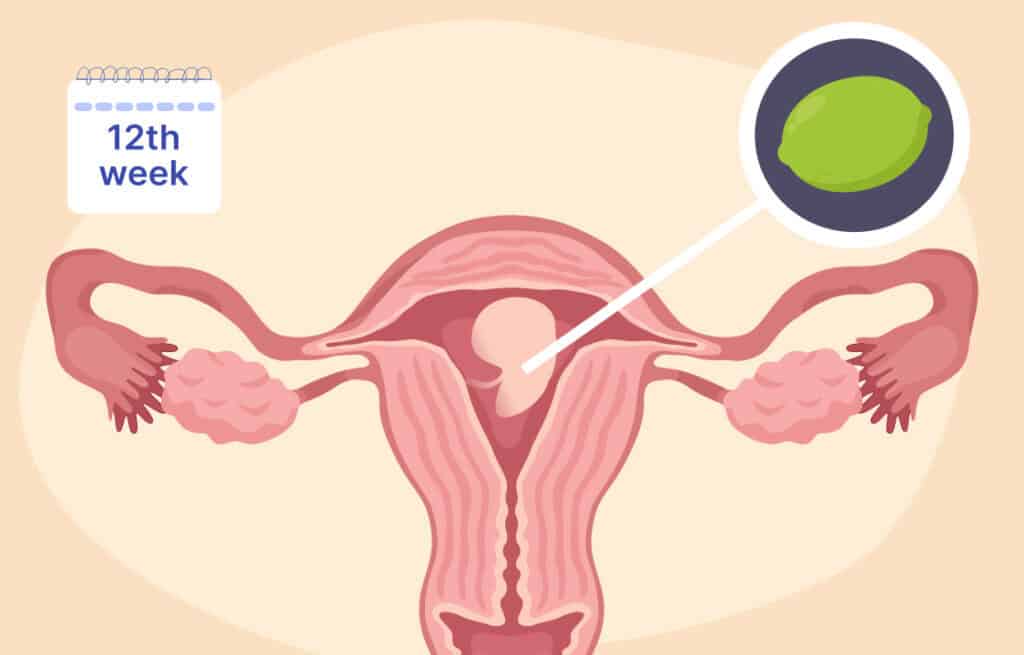Femia > Health Library > Your cycle > Sex > Understanding squirting: What it is, what it feels like, and how to do it
Understanding squirting: What it is, what it feels like, and how to do it

- Updated Feb 28, 2025
- Published
CRAFTED BY HUMAN
Crafted by human At Femia, we provide accurate and up-to-date information at every stage of your journey, from trying to conceive, pregnancy and postnatal support. All content is created by a real person based on in-depth research and own professional experience. Femia ensures that you will receive expert advice, strict accuracy and a personalized approach from our authors/medical experts. Learn more about our editorial policy.
FACT CHECKED
Fact checked At Femia Health, we maintain the highest standards of editorial excellence in delivering content focused on helping you conceive, guiding you through pregnancy, and supporting you postpartum. Explore our content review principles to learn how we ensure the accuracy and quality of our health and lifestyle tips for every stage of your journey.
- Squirting is an expulsion of a substantial amount of fluid from the female urethra during sexual activity, which is experienced by around 40% of women.
- Although it’s frequently confused with urination, it’s somewhat different. The fluid originates from the bladder and contains urine components, but it also contains secretion from Skene’s glands and generally has a more mild odor and taste.
- It may occur naturally, but most females and their partners stimulate squirting with the help of the right techniques, such as relaxation and rhythmic stimulation of the G-spot.
Squirting is a well-known physiological phenomenon. Due to its unknown nature, of course, there is a lot of common curiosity about this phenomenon. Many women have quite a few questions about it. What is squirting? Is squirting peeing or an intense orgasm? What does it feel like, and how do you achieve it?
In this guide, we’ll answer all these and many other questions about squirting to help you shed light on this topic. We will also discuss the factors contributing to squirting and tips that might help you achieve it.

What is squirting?
Squirting is the expulsion of a substantial amount of fluid from the female urethra during sexual activity, whether masturbation or intercourse with a partner. Sometimes, it’s confused with female ejaculation, which also involves the secretion of fluid. However, experts insist that these two phenomena may sound similar but are completely different, as female ejaculation is accompanied by a small amount of fluid that comes from the paraurethral glands.
Due to a notable amount of fluid (though its amount can vary greatly, from 0.01 oz to 5 oz) and unhabitual sensations typically experienced during squirting, facing it for the first time (especially with no prior intent) might feel confusing or concerning. But, it’s important to note that squirting is an absolutely natural physiological response at the height of sexual arousal. It’s often associated with intense pleasure and sexual stimulation.
Difference between squirting, female ejaculation, and coital incontinence
Squirting
Squirting, often referred to as “female ejaculation,” involves the release of a larger volume of fluid from the urethra during sexual activity, usually accompanied by intense sexual pleasure or orgasm. While there is still debate in the scientific community about the exact nature of the fluid, many believe it is a mixture of urine and secretions from the Skene’s glands, which are located near the urethra.
Female ejaculation
Female ejaculation is the release of a smaller amount of fluid from the Skene’s glands, which is typically a clear or milky substance that is distinct from urine. It is often experienced during orgasm, but it can occur without one as well. Female ejaculation tends to be less voluminous than squirting and is generally more associated with sexual pleasure and orgasm.
Coital incontinence
Coital incontinence refers to the involuntary release of urine during sexual activity. Unlike squirting or female ejaculation, coital incontinence involves urine leakage from the bladder, often due to stress incontinence, a condition where increased pressure on the bladder (such as during intercourse) leads to leakage. This is typically considered a medical issue and may require treatment to manage or prevent it.
In summary, while squirting and female ejaculation are related to sexual arousal and pleasure, coital incontinence is the involuntary release of urine, which is a separate condition that may need medical attention.
Causes and mechanisms of squirting
Achieving squirting involves stimulating key areas, such as the G-spot and Skene’s glands, in combination with sexual arousal. Not every woman can experience squirting, as the ability varies between individuals, but for those who can, the following mechanics play a role:
G-Spot stimulation: The G-spot, located on the anterior (front) wall of the vagina, is crucial for squirting. It can be stimulated through deep vaginal penetration, either with fingers, a toy, or during intercourse. Applying firm, rhythmic pressure to this area creates sensations of fullness and pressure that trigger squirting.
Activating the Skene’s Glands: The Skene’s glands, sometimes referred to as the female prostate, are located near the urethra and secrete fluid during arousal. To activate these glands, focus on consistent, targeted G-spot stimulation. This pressure causes the glands to release fluid, which will eventually be expelled through the urethra.
Building pressure: As the G-spot and Skene’s glands are stimulated, increased pressure builds in the pelvic area, creating intense sensations that lead to sexual arousal and eventual squirting. Women may feel a strong sensation of fullness or the urge to urinate, which is often mistaken for the need to go to the bathroom, but it’s actually a sign that fluid is building up.
Urethral expulsion: When the pressure reaches its peak, the fluid from the Skene’s glands is released through the urethra. Unlike urine, this fluid is clear or milky and is often called female ejaculate. The volume of fluid can vary, with some women experiencing a significant release, while others may have only a small amount.
Achieving squirting depends on various factors, including anatomy, sexual arousal, and the sensitivity of the G-spot and Skene’s glands. With the right combination of stimulation and arousal, some women can experience squirting, but it remains a unique and rare phenomenon.
What does squirting feel like?
The large amount of fluid that accompanies squirting often makes people think that it’s the same as urination. However, although the squirting fluid originates from the bladder and comes from the urethra, it is not the same as urine.
Studies of female sexual fluids found that the fluid released during squirting does contain the components of urine—such as urea, creatinine, and uric acid—but it also contains other components, such as the mucus-like secretion from Skene’s glands, which lubricate the urethra opening.
What does squirt taste like?
Squirt is typically a neutral, faint, and nearly water-like fluid that doesn’t have a pronounced taste. It may have slightly sweet or salty hints that resemble something bodily, but it is not the same as urine and generally has a milder taste. Additionally, it’s important to understand that the taste may vary from one woman to another.
What does squirting smell like?
Squirt is generally clear and odorless. Some people mention a slightly sweet or musky scent, but the smell is typically mild and not as strong as urine. Similarly to squirt taste, the smell can also vary from one woman to another. Just like other bodily fluids, it can change its smell depending on various individual factors, such as diet and hydration.
6 Common myths and misconceptions about squirting
Squirting is the same as urination
One of the most common myths is that squirting is just urination. While the fluid expelled during squirting may contain small amounts of urine, it is primarily produced by the Skene’s glands and is different from urine. Squirting occurs during sexual arousal, not out of necessity to empty the bladder.Every woman can squirt
Does everyone have the ability to squirt? The answer is no. The ability to squirt depends on individual anatomy, sexual arousal, and how sensitive the G-spot and Skene’s glands are. While some women can squirt, many may never experience it, and that’s perfectly normal.Squirting happens every time during orgasm
Squirting is not guaranteed with every orgasm. While some women may experience squirting during sexual activity, it is not a consistent occurrence. Orgasm and squirting are separate, and it is possible to orgasm without squirting.Squirting requires intense penetration
Another misconception is that squirting can only happen through deep or intense penetration. While deep vaginal stimulation can increase the likelihood of squirting, it can also happen with other forms of stimulation, such as manual or clitoral stimulation, depending on the individual’s body.Squirting means you’re “doing it right”
Squirting does not define sexual satisfaction or “doing it right.” It’s simply a phenomenon that occurs in some women. Sexual pleasure and intimacy are personal experiences, and squirting is not a measure of sexual success or performance.Squirting is a sign of excessive arousal
Some believe that squirting is a sign of extremely high arousal. While squirting is often linked to heightened sexual pleasure, it doesn’t always correlate with the intensity of arousal or orgasm. Each person’s body responds differently to stimulation.
By dispelling these myths and misconceptions, it becomes easier to understand that squirting is a personal and natural experience that varies from woman to woman.
Is squirting peeing?
The large amount of fluid that accompanies squirting often makes people think that it’s the same as urination. However, although the squirting fluid originates from the bladder and comes from the urethra, it is not the same as urine.
Studies of female sexual fluids found that the fluid released during squirting does contain the components of urine—such as urea, creatinine, and uric acid—but it also contains other components, such as the mucus-like secretion from Skene’s glands, which lubricate the urethra opening.
Is squirting an orgasm?
While squirting is a part of female sexuality and pleasure, not every squirt is an orgasm. In a study of squirting experiences, specialists found that only 20% of women who participated in the study experienced squirting and orgasm together.
On the other hand, squirting takes place at the peak of sexual arousal and relaxation. In some females, it is accompanied by feelings of intense pleasure that may resemble orgasm.
What makes a woman squirt?
A comprehensive study of squirting experiences in females found that around 65% of women explore this sensation for the first time unintentionally[5]. For them, it happened naturally in the process of exploring their own sexuality or while exploring it with a partner.
So, what makes someone squirt? According to analyses of individual sexual experiences, for women, there are more factors determining and affecting arousal and pleasure compared to men. In the case of squirting, there are three known components of its mechanism:
- G-spot stimulation. The G-spot is considered the most sensitive region of the vagina. The area where the G-spot is found is also where the urethral sponge is located, which secretes lubricating fluid into the urethra and makes it flow back into the bladder. Hence, if stimulated correctly, it can trigger squirt.
- Other erogenous zones. Squirting occurs when pleasure and arousal-related pressure build up in the female body. That’s why intense stimulation of erogenous zones, such as the clitoris, can also contribute to squirting by promoting overall relaxation and pleasure. Still, it’s important to note that clitoral stimulation isn’t what causes squirting—the G-spot is the primary tool.
- Emotional and psychological factors. Just like female orgasm mechanisms, the ability to squirt depends significantly on psychological factors. Without feeling completely relaxed, a woman may not be able to achieve the peak of arousal needed for squirting. Hence, relaxation, deep trust with a partner, and overall mental state are important elements.

How to squirt: tips and techniques
Now that you know what makes a woman squirt, you might be interested in the specific stimulation techniques that can cause it. While squirting can occur spontaneously or through exploration, around 75% of females who experienced it reported engaging in deliberate techniques to promote the build-up and release of squirting. Hence, it’s believed that some females might be able to learn how to squirt through practice.
👉Find out more: Can you squirt after menopause? The ultimate guide to sex and orgasms after menopause
Here are some tips and techniques that might help with it:
Preparation and mindset
Relaxation and the right mindset are pivotal for libido, sexual arousal, and the ability to orgasm or squirt. When a woman is tense, it might prevent pleasure from flowing through the body and create a mental block for satisfaction, making it hard for squirt to build up.
If you decide to try squirting, prepare for it by creating a relaxing and comfortable atmosphere. Consider using comforting music or lighting some candles to create a low-light environment and relax your nervous system. It might help to use scents for aromatherapy to promote relaxation. Also, a good rule of thumb is to begin with a mild, relaxing massage.
If you are with a partner, a deep sense of trust is another important factor. Consider communicating your erogenous zones, likes, and dislikes to promote trust and feel more comfortable.
Finding the G-spot
To be able to stimulate the G-spot, locate it in advance. It is a small area located inside the vagina on the upper wall, around 2–3 inches up from the vaginal opening.
Locating it by hand shouldn’t be hard, as it typically feels rougher than the surrounding vaginal tissue—it is a small, ribbed area that reportedly feels like an orange peel. Another hack for locating the G-spot is to try pressing and stimulating the discovered area; if it’s the right spot, it should create a pleasant sensation.
Stimulation techniques
The preparation for squirting should begin with foreplay for maximum relaxation and arousal. The type of foreplay can vary from one person or couple to another, as it ideally should focus on individual preferences and erogenous zones.
After foreplay, a woman may lie on her back for simplified access to the G-spot. It’s recommended to apply some lube at the start to eliminate any discomforting feelings, and gently rub it around the inner and outer lips, vaginal opening, and clitoris to begin stimulation. When arousal peaks, you may use some of the following stimulation techniques:
- Curve the middle and ring fingers, insert them into the vagina, and locate the G-spot. Then, create rhythmic pressure on the G-spot by tapping it.
- Use the middle and ring fingers to create a wave-like motion, stimulating the G-spot.
- Use the middle and ring fingers and go up and down with the entire hand.
- Use only the index finger to create a tapping movement known as the “come-hither” motion.
Regardless of the techniques used, it’s important to start gently and slowly. When you start hearing a splashing sound, it indicates that fluid is building up, and you should pick up the pace, increasing the intensity of stimulation.
It’s also possible to combine these techniques with clitoral stimulation for a more multifaceted sensation.

Experimenting with positions
A woman lying on her back is one of the most common positions for squirting, but it’s not the only possible position.
If you are trying this with your partner, you can consider experimenting with poses to find what works best for you. For example, doggy style and cowgirl (when a woman is on top) are also considered to be effective in terms of giving seamless access to the G-spot.
Use of sex toys
Effective G-spot stimulation that results in squirting typically requires quite a lot of hand strength to maintain consistent, fast-paced motions. Thus, whether trying it solo or with a partner, it may not work simply because of tiredness and excessive pressure on the hand. That’s when using some sex toys might help.
There are dozens of vibrator options with a slightly curved end that are designed specifically for G-spot stimulation. These can be used both solo or with a partner to build up fluid. Some models also come with a vibrating or suction element for additional clitoris stimulation.
Communicate with your partner
Open communication with your partner is essential when exploring squirting. Discussing your preferences, comfort levels, and desires can help create a relaxed, trusting atmosphere. Let your partner know what feels good, what doesn’t, and what kind of stimulation works best for you. Mutual understanding and a willingness to experiment can enhance the experience and make it more enjoyable, especially when it comes to understanding the specific techniques and pressures that may lead to squirting.
Creating a comfortable environment
Creating a comfortable, stress-free environment is key to relaxation and arousal. Set the mood by ensuring privacy, a comfortable temperature, and lighting that makes you feel at ease. Being relaxed can help you focus on your body and sensations, which is essential for achieving squirting. Avoiding distractions and setting aside time for intimacy can also help reduce performance anxiety, making the experience more enjoyable and less pressured. A comfortable and confident mindset often leads to better physical responses during sexual activity.
Techniques for self-discovery
Self-discovery is crucial when it comes to exploring squirting. Start by exploring your body on your own to understand what feels good and how different types of stimulation affect you. G-spot stimulation, either manually or with a toy, is key, so learning the location of your G-spot and experimenting with different pressure levels and motions can help you understand your body’s responses. Pay attention to sensations of fullness or pressure, and try different positions to see what provides the most stimulation. Patience and practice can lead to better understanding of your body’s ability to squirt.
Questions from the Femia community
Is squirting common?
Although this topic is still surrounded by many myths and misunderstandings, the phenomenon is surprisingly common. A probability sample of American women aged 18–93 showed that as many as 40% of females have experienced squirting in their lifetime. However, experiences vary greatly based on individual factors.
Can all women squirt?
Squirting is a normal variation of a physical response to sexual arousal, and nearly half of women experience it at least once in a lifetime. However, not all women squirt, and this might be due to different individual factors, which is also normal.
Can you learn to squirt?
Yes, it’s believed that some females can learn to squirt. This can be done through continuous practice and the right stimulation techniques. Also, it typically requires a good knowledge of your body and erogenous zones and the right emotionally-psychological state.
Is there any health risk associated with squirting?
No, squirting is a natural part of female sexuality and a normal response to sexual arousal and stimuli. It is generally considered safe.
Can men cause squirting during intercourse?
Yes. Squirting can occur both during masturbation and sexual intercourse with a partner. Through the right techniques, stimulation practices, and positions, men can stimulate their partners to squirt.
The bottom line
Squirting is one of the mysteries of the complex physiology of female sexuality, orgasm, and ejaculation. Although many have seen it or heard the term, there are plenty of questions and miscomprehension about it. Many females have even experienced this phenomenon, though the majority of them explored this sensation solely by accident.
After reading this guide, you should know that squirting is a natural aspect of female sexuality that some women experience. It’s triggered by the right G-spot stimulation, engagement with other erogenous zones, and the right mindset.
Now that you know more and have practical techniques that might be used to build up squirting, don’t hesitate to explore your body, too. Whether alone or with a partner, exploration of your sexuality is an important aspect of high-quality living that can greatly improve your sexual experiences.
References
- Arias-Castillo L, García L, García-Perdomo HA. “The complexity of female orgasm and ejaculation.” Arch Gynecol Obstet, Aug. 2023. https://pubmed.ncbi.nlm.nih.gov/36208324/.
- Pastor Z, Chmel R. “Female ejaculation and squirting as similar but completely different phenomena: A narrative review of current research.” Clin Anat, Jul. 2022. https://pubmed.ncbi.nlm.nih.gov/35388532/.
- Florian Wimpissinger, Christopher Springer, Walter Stackl. “International online survey: female ejaculation has a positive impact on women’s and their partners’ sexual lives.” BJU International, Sexual Medicine, 25, Jan. 2013. https://bjui-journals.onlinelibrary.wiley.com/doi/abs/10.1111/j.1464-410X.2012.11562.x.
- Pastor Z, Chmel R. “Differential diagnostics of female “sexual” fluids: a narrative review.” Int Urogynecol J, May, 2018. https://pubmed.ncbi.nlm.nih.gov/29285596/.
- Inoue M, Sekiguchi Y, Ninomiya N, Kobayashi T, Araki M. “Enhanced visualization of female squirting.” Int J Urol, Nov. 2022. https://pubmed.ncbi.nlm.nih.gov/36000809/.
- Hensel DJ, von Hippel CD, Lapage CC, Perkins RH. “Vaginal Squirting: Experiences, Discoveries, and Strategies in a U.S. Probability Sample of Women Ages 18-93.” J Sex Res, May, 2024. https://pubmed.ncbi.nlm.nih.gov/37606312/.
- Arcos-Romero, A. I., & Sierra, J. C. “Factors Associated with Subjective Orgasm Experience in Heterosexual Relationships.” Journal of Sex & Marital Therapy, 9, Jan. 2020. https://www.tandfonline.com/doi/full/10.1080/0092623X.2019.1711273.
- Pan S, Leung C, Shah J, Kilchevsky A. “Clinical anatomy of the G-spot.” Clin Anat, Apr. 2015. https://pubmed.ncbi.nlm.nih.gov/25740385/.
- Nummenmaa L, Suvilehto JT, Glerean E, Santtila P, Hietanen JK. “Topography of Human Erogenous Zones.” Arch Sex Behav, Jul. 2016. https://pubmed.ncbi.nlm.nih.gov/27091187/.
- I. Jonášová, Petr Weiss. “Some characteristics of female orgasm.” Ceskoslovenska psychologie, Jan. 2007. https://www.researchgate.net/publication/288999708_Some_characteristics_of_female_orgasm.
- Cooke B, Ernst E. “Aromatherapy: a systematic review.” Br J Gen Pract, Jun. 2000. https://pubmed.ncbi.nlm.nih.gov/10962794/.

Explore choline supplement pregnancy options and learn why choline is important during pregnancy. Boost your baby’s brain development with expert nutrition advice.

Let’s learn what is postpartum hair loss, why it happens, and how you can manage the process.

At 12 weeks pregnant, your baby’s organs are forming, and a bump may appear. Explore fetal development, symptoms, and what to expect in week 12.

